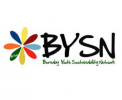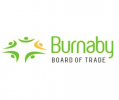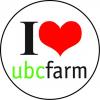News: Why the Inukshuk represents the heart of Canada

By Elena Rivera MacGregor
As published by the Vancouver Sun, February 2010.
It seems like only yesterday we were rushing around putting together the submission for the eventual winning entry for the Winter Games logo competition—yet it was fully five years ago. Those years have passed quickly, and today the excitement in the community is building rapidly.
People are asking me about the Inukshuk logo and its meaning for the Olympics. These questions come all the time, with the main one being, “What does the inuksuk mean?” Here is what I will tell visitors:
As Canadians we are known around the world for our friendliness. It’s a characteristic that may be related to the centuries-old tradition of dealing with a harsh, often unforgiving climate and landscape. We have always needed the help of others in order to live in this country, and, while there is definitely a core of rugged individualism, it’s tempered by a sense of friendliness and communal spirit that represents the very best of Canadian values.
We are proud of our sense of community, which can be seen in the humility and spirit of people such as Terry Fox and in the overwhelming response when a child goes missing or when Haitians need help.
The Inukhsuk (pronounced ih-nook-suuk) mirrors this Canadian spirit of friendship and community. There are many kinds of Inuksuit (plural for Inukshuk), and they mean different things depending on how and where they are built. Traditionally, they were used by the Inuit in the north as directional markers. An Inukshuk in the shape of a person signifies safety, hope and friendship. These stone sculptures were also important for navigation, as a point of reference, as a marker for hunting grounds, or to denote a food cache. They were visible in snowy conditions, can endure extreme weather and, ultimately, can help people survive.
The skill of building an Inukshuk was passed down from one generation to the next, with each Inukshuk having a specific purpose and meaning. Initially they were used mainly for navigation, e.g., to point the way to a good fishing spot or to the closest village where a traveler might find shelter, but they later evolved to have symbolic spiritual uses, marking places of judgment and decision-making, worship and celebration.
Inuksuit have been transformed into a symbol of hope and friendship that transcends borders to reach people all over the world. Inuksuit have become a universal symbol of friendship, and this is why we named our entry “Ilanaaq” (ee-la-nak) — “friend” in Inuktitut — and it became the basis for the 2010 Winter Olympics logo.
The Inukshuk conveys our basic human warmth and friendliness as Canadians and provides a fantastic symbol for the Friendship Games, not only for the visitors who will be arriving, but also to remind us of the values that make Canada a truly great place to live.
My sense from talking with people over the last few weeks is that British Columbians are preparing to respond to these Games to make them the friendliest yet. Just as an Inukshuk does, we’ll help travellers navigate their way around our city and province, and all the various venues, showcasing our truly Canadian values of friendship and community.
If visitors ask you what the Inukshuk is, simply tell them it represents Canadian friendship, the heart of our country.
Ellen Rivera MacGregor is re-branding expert at Rivera Design Group Ltd., winner of the 2010 National Olympic Logo Design Competition. You can download an Inukshuk Guide at www.riveradesign.com.
Category:


































